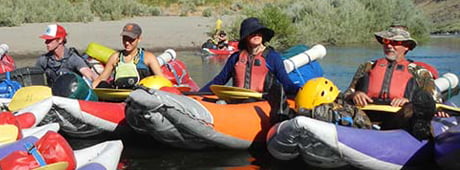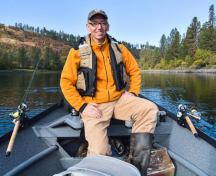No products in the cart.
Stand Up and Die

The River’s Out to Get Me
Story and Photos by John O’Bryan
What Allison said was, “I didn’t ask you to go at first, because I didn’t think you’d be able to do it.”
What I heard was, “You’re too weak and feeble to do anything like float down a river with me, old man.”
“I want to go,” I said, and the click I heard was the sword of Damocles breaking free from its precarious position overhead. Had I really just committed to floating fifty miles of the most remote river in the Lower 48, the Owyhee, with my daughter? Yes, I had.
I was terrified even before I learned that someone had died on the river that spring, even before I envisioned the flotsam and jetsam of a shattered boat held by the pressure of what amounted to two full-grown cows pressing it against a rock wall.
At the moment, all I knew was what Allison had told me, that there are no roads in or out and you must leave nothing but footprints and take out nothing but your bodily fluids. I was worried (and a little grossed out) by this statement, but the event was still months away and a lot could happen between then and now.
Nothing did.
A bunch of others would be on this father-daughter trip, for which my daughter was a third-year guide, but clearly I was the one who would die on the river. It would be hard on Allison to have to pull her dad’s lifeless body out of a rapid but I didn’t care. She had asked me to go and it would serve her right for goading me into coming.
This content is available for purchase. Please select from available options.
Register & Purchase Purchase Only
Register & Purchase Purchase Only


2 Responses to Stand Up and Die
DeAnn Isenberg -
at
Awesome story. Great father/daughter, we can all relate story!
Paul Spence -
at
As a guide, I always find it educational to hear a participants view of events that had recently transpired. Very funny indeed, I had a good laugh. But John our guides never use the word died or dead that’s a no no. For editorial sake, I believe the rapid you were describing was Bulls Eye, hard to say but Read it and Weep is on day 3 and down stream of the Weeping Wall. Read it and Weep is a more intimidating name, I’ll give you that. Really enjoyed the article and will share it with many others who’ve struggled in the beginning of the trip.